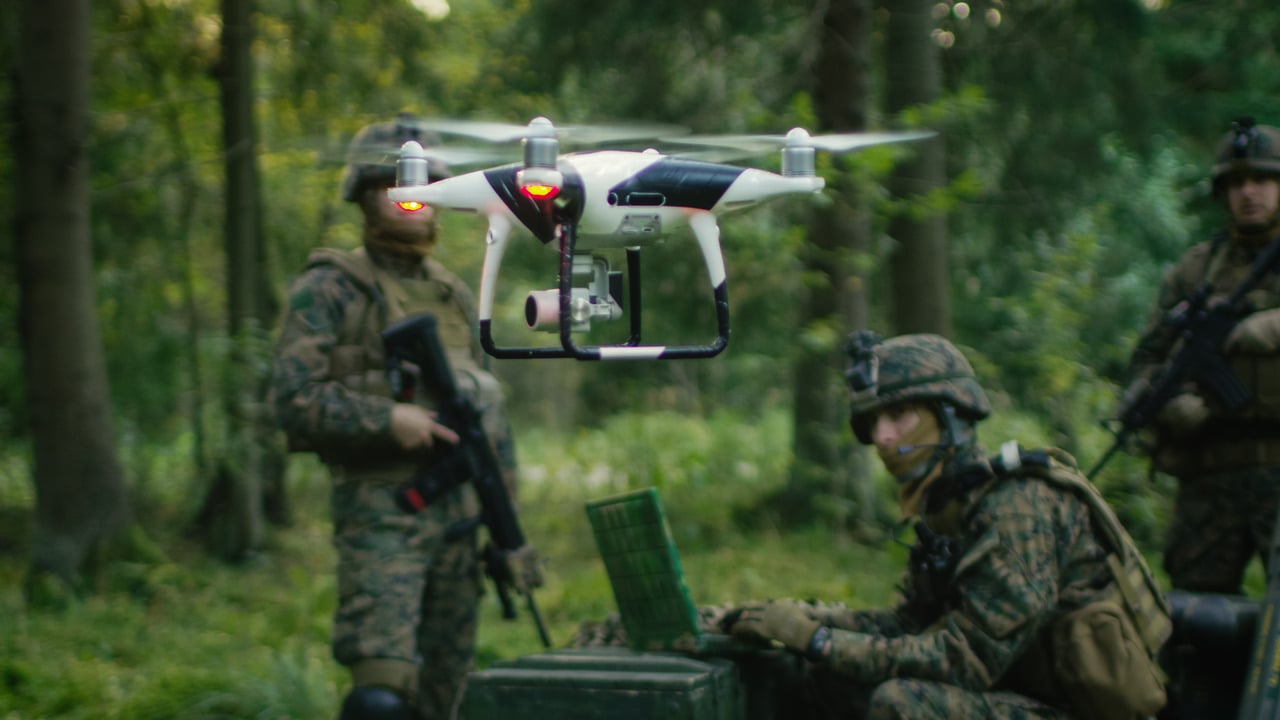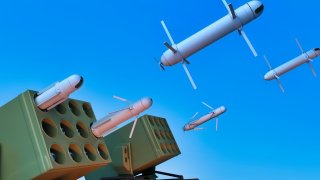China's Military Just Tried to Fight a 'Drone Swarm'. It Didn't Go Well
Experts suggest that a layered defense, including electronic jamming, surface-to-air missiles, and lasers, may be needed to combat drone swarm threats effectively.
Summary and 5 Facts You Need to Know: China's People's Liberation Army (PLA) recently tested its counter-drone swarm capabilities, achieving only a 40% success rate against a swarm of 11 to 12 drones.
-The exercise used six Type 95 and three Type 07 self-propelled anti-aircraft artillery vehicles.
-Despite being equipped with advanced tracking and targeting systems, the PLA found it challenging to hit the fast, small drones, which could change trajectories rapidly.
-This test highlights the difficulties in countering larger drone swarms.
-Experts suggest that a layered defense, including electronic jamming, surface-to-air missiles, and lasers, may be needed to effectively combat drone swarm threats.
China Battled Drone Swarm With Limited Success
Drones continue to be a game changer on the modern battlefield. Small unmanned aerial systems (UAS) have been used to great effect against an enemy's main battle tank (MBT), convoys, and even forward positions. A single first-person view (FPV) UAS can be difficult to counter, but an adversary can be quickly overwhelmed by so-called drone swarms.
"Swarms are superior to individually operated drones because of drone-to-drone communication, which allows sensory information gathered by one drone to be transmitted directly to the entire group and adjust its behavior without requiring further input from the operator or commanders," wrote Josh Curtis and Anthony De Luca-Baratta for The National Interest.
The United States military has been exploring options to counter such a threat, but it has seen limited success. The good news is that the same holds true for China. The People's Liberation Army (PLA) recently conducted a counter-drone swarm operation and was able to counter just 40% of the swarm.
Chinese state media outlet CCTV reported earlier last month that during a recent exercise, the PLA carried out a test of its anti-drone swarm capabilities. According to reports, the swarm consisted of just 11 to 12 commercial-type drones. The People's Liberation Army Ground Force's (PLAGF's) 77th Group Army was tasked with engaging the drones – employing two types of self-propelled anti-aircraft artillery (SPAAA) tracked vehicles.
International military analyst firm Janes reported that it assessed the video imagery and "found that six Type 95 (also known as the PGZ-95) SPAAA vehicles initially engaged the UAVs. Three PGZ-09 (Type 07) 35 mm SPAAAs also comprised the initial PLAGF response to the UAVs."
According to Janes, "The PGZ-95 is equipped with 25 mm Type 87 cannons with a fire-control system comprising an EO suite mounted on the forward part of the turret. The suite includes a television tracking camera with a range of 6,000 m, an infrared tracking camera with a range of 5,000 m, and a laser rangefinder (LRF) with a range of 500–5,500 m. This calculates weapon-laying data."
The vehicles achieved just a 40% hit rate, which was far less effective than the PLA likely desired – and it should be added that this was against just a dozen aerial platforms. A drone swarm with several dozen or perhaps hundreds of unmanned aerial vehicles (UAVs) would mean a considerable number would make it through.

"Shooting at drone swarms was still quite challenging due to their speed and small size, as well as their ability to change flight trajectories – making it easy for gunners to lose their targets," Duan Xiaolong, from an unnamed regiment with the PLA Ground Force's 77th Group Army explained to CCTV, per Interesting Engineering.
A Layer Defense May Be Needed
Air-defense systems that were designed for use against manned aircraft and missiles are for far proving to be effective against individual drones – but cost remains an issue. Anti-aircraft missiles that cost hundreds of thousands or even millions of dollars are simply not well-suited to countering drones.
A layered defense that includes electronic jamming systems, surface-to-air missiles, close-in weapons systems (CIWS), directed energy weapons (DEWs) and lasers, will need to be employed. Yet, even those might not be enough to stop a large-scale drone swarm. But it is a problem that the U.S. military isn't alone in facing.
Author Experience and Expertise: Peter Suciu
Peter Suciu is a Michigan-based writer. He has contributed to more than four dozen magazines, newspapers, and websites with over 3,200 published pieces over a twenty-year career in journalism. He regularly writes about military hardware, firearms history, cybersecurity, politics, and international affairs. Peter is also a Contributing Writer for Forbes and Clearance Jobs. You can follow him on Twitter: @PeterSuciu. You can email the author: [email protected].
Image Credits: Shutterstock.


